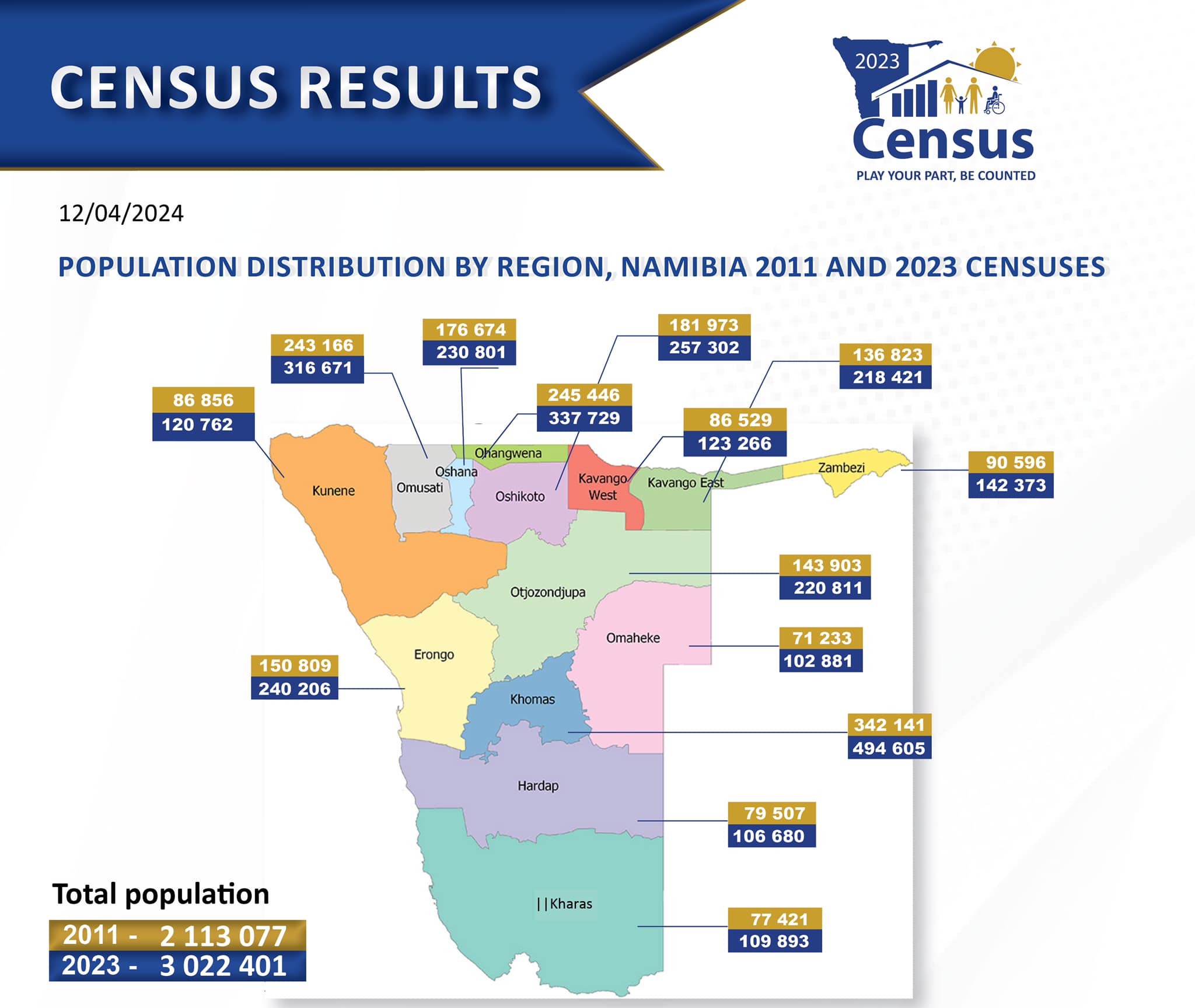Namibia’s population census plays a pivotal role in shaping the country’s political, social, and economic landscape. One of the key aspects of Namibia’s census system is its ability to provide accurate, up-to-date demographic data that directly influences various aspects of governance, including elections. The use of census data in Namibia goes far beyond just statistical analysis – it is an essential tool for electoral planning, resource allocation, and ensuring equitable representation. This article delves into how Namibia’s innovative approach to census-taking shapes its elections and broader democratic processes.
The Importance of Accurate Demographic Data in Elections
Accurate demographic data is vital for ensuring that elections are fair, transparent, and representative. In Namibia, census data is used to determine several crucial factors, including electoral boundaries, the allocation of seats in the National Assembly, and the distribution of resources across regions. Without precise and up-to-date population information, the electoral process would be skewed, potentially leading to unequal representation and inefficient public policy.
Namibia’s commitment to regularly collecting demographic data ensures that it has the necessary information to address shifting population trends, urbanization, migration, and other changes that could affect voter distributions. With the 2021 Census serving as the most recent demographic snapshot, Namibia continues to refine its electoral system and governance structure based on real-time data. This approach has not only improved the effectiveness of elections but also supported equitable development throughout the country.
Census Methodology and Its Role in Electoral Mapping
Namibia’s approach to census-taking is innovative and well-integrated into the electoral system. Every ten years, the government conducts a comprehensive population census that collects data on the size, distribution, and characteristics of the population. This data is then used to inform a wide range of government policies, including the distribution of electoral districts and the creation of voting boundaries.
One of the most important uses of census data in Namibia’s electoral system is in the delineation of constituencies. Each constituency is designed to have an approximately equal number of residents, which is critical for ensuring fair representation in the National Assembly and local councils. The population data from the census enables the government to identify areas where populations have grown or shrunk, ensuring that each voter is represented equally, regardless of where they live.
The census data is also used to adjust voting district boundaries, ensuring that each electoral district reflects demographic changes such as migration trends, urbanization, and shifts in population density. This process is essential for preventing “gerrymandering,” a practice that can skew electoral outcomes in favor of one political party or group. By using precise, up-to-date data from the census, Namibia maintains a democratic system where electoral districts are drawn in a fair and unbiased manner.
Resource Allocation and Electoral Planning
Beyond electoral boundaries, census data is crucial in shaping resource allocation across the country. Namibia’s electoral districts are not just defined by population size – they are also based on the need to ensure equitable access to resources, such as healthcare, education, and infrastructure. The census allows the government to identify areas of need and prioritize funding and development projects accordingly.
For example, regions with higher population densities may require more schools, hospitals, or public services to meet the needs of residents. By using census data to determine these needs, Namibia ensures that the resources required for development are distributed fairly and efficiently across the country. This process is integral to the functioning of local governments and political parties as they plan for elections and governance.
Census data also helps political parties and candidates plan their campaigns more effectively. Understanding where populations are concentrated allows parties to target their outreach efforts, campaign resources, and policy proposals to the areas that matter most. In addition, it enables political organizations to understand demographic trends, such as shifts in urbanization or migration, which could affect voting behavior and election outcomes.
Electoral Integrity and Population Movements
One of the unique aspects of Namibia’s electoral system is its ability to track population movements, which are particularly important in a country where migration is a significant factor. As people move from rural to urban areas, the census provides a real-time snapshot of where voters are likely to be located. This data allows for the creation of electoral districts that reflect current population trends, ensuring that all areas are represented accurately, even as populations shift.
In some cases, migration from neighboring countries or rural to urban areas can lead to imbalances in voter distribution, which is why the census is critical for maintaining electoral integrity. When people migrate to cities like Windhoek, Swakopmund, or Walvis Bay in search of better economic opportunities, it can impact the balance of power in both national and local elections. The census helps to ensure that the political influence of growing cities is appropriately accounted for in the allocation of seats in the National Assembly and local government councils.
Furthermore, the data generated by the census is vital for monitoring electoral processes and ensuring that voter rolls are accurate. It allows election authorities to detect any discrepancies, such as undercounting or overcounting in particular regions, ensuring that the election results reflect the true will of the population. The regular updating of demographic data makes Namibia’s elections more transparent and trustworthy, helping to maintain public confidence in the democratic system.
Public Engagement and Voter Awareness
Another critical aspect of Namibia’s census innovation is its role in engaging the public and raising awareness about the importance of participation in the electoral process. The census provides a platform for informing citizens about their rights and responsibilities as voters, emphasizing the connection between demographic data, electoral representation, and governance.
The government and civil society organizations use census data to educate the population about voting procedures, the importance of accurate voter registration, and the potential impact of their votes on national policy. The census also offers an opportunity for marginalized communities and underrepresented groups to voice their concerns, as it collects data on various social and demographic categories, such as gender, age, and ethnicity.
This process helps foster a deeper understanding of the electoral system and encourages more people to engage with the democratic process. As Namibia’s population grows and diversifies, it is essential to ensure that all communities are adequately represented and that their voices are heard in both local and national elections.
The 2021 Census and Its Impact on the 2024 Elections
The 2021 Census represents a crucial milestone in Namibia’s demographic evolution. The data collected from the 2021 Census will directly inform the country’s political landscape in the lead-up to the 2024 general elections. The updated population numbers and demographic trends will be used to adjust electoral boundaries, determine resource distribution, and plan election logistics.
For instance, areas that have seen significant population growth since the last census in 2011 may see new constituencies or revised voting districts to ensure that each area is properly represented. Similarly, the distribution of resources for infrastructure development, healthcare, and education will be guided by the updated census data.
The 2021 Census has also provided valuable insights into shifting demographic trends, such as changes in the rural-urban divide, migration patterns, and age distribution. Political parties will use this data to strategize their campaigns and align their policy proposals with the priorities of voters in different regions.
Namibia’s innovative use of census data in shaping elections demonstrates the crucial role that accurate demographic information plays in a functional democracy. The country’s commitment to conducting regular, transparent, and comprehensive censuses ensures that its electoral system remains fair, representative, and responsive to the needs of its diverse population.
As Namibia continues to develop, its census innovation will be an essential tool for addressing population shifts, guiding resource allocation, and ensuring that elections are held in a way that reflects the true diversity and needs of the population. With each passing decade, the country’s approach to census-taking and electoral planning will evolve, but the fundamental principle remains the same: data-driven governance leads to a stronger democracy for all.
Join 'Namibia Today' WhatsApp Channel
Get the breaking news in Namibia — direct to your WhatsApp.
CLICK HERE TO JOIN












